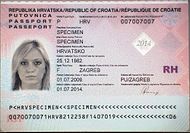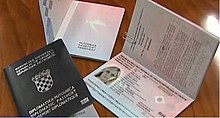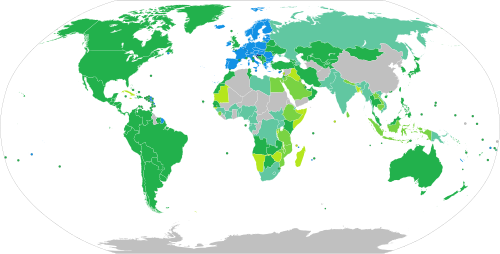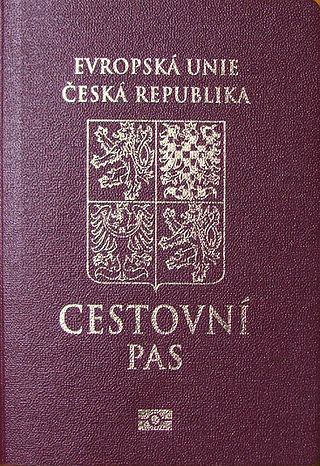
The Czech passport is an international travel document issued to nationals of the Czech Republic, and may also serve as proof of Czech citizenship. Besides enabling the bearer to travel internationally and serving as indication of Czech citizenship, the passport facilitates the process of securing assistance from Czech consular officials abroad or other European Union member states in case a Czech consular is absent, if needed.

A French passport is an identity document issued to French citizens. Besides enabling the bearer to travel internationally and serving as indication of French nationality, the passport facilitates the process of securing assistance from French consular officials abroad or other European Union member states in case a French consular is absent, if needed.

A Portuguese passport is an identity document issued to citizens of Portugal for the purpose of international travel. The passport, along with the Citizen Card allows for free rights of movement and residence in any of the states of the European Union, European Economic Area and Switzerland. Every Portuguese citizen is also a citizen of the European Union.

Romanian passport is an international travel document issued to nationals of Romania, and may also serve as proof of Romanian citizenship. Besides enabling the bearer to travel internationally and serving as indication of Romanian citizenship, the passport facilitates the process of securing assistance from Romanian consular officials abroad or other European Union member states in case a Romanian consular is absent, if needed.

Greek passports are issued to Greek citizens for the purpose of international travel. Biometric passports have been issued since 26 August 2006, with old-style passports being declared invalid as of 1 January 2007. Since June 2009, the passport's RFID chip includes two index fingerprints as well as a high-resolution JPEG image of the passport holder. From 18 December 2023 the issuance of new generation of Greek passports has started by selected authorities and after 9 January 2024, only the new generation of passports will be issued. Every Greek citizen is also a citizen of the European Union. The passport, along with the national identity card allows for free rights of movement and residence in any of the states of the European Union, European Economic Area, and Switzerland.

The Montenegrin passport is the primary document for international travel issued by Montenegro.
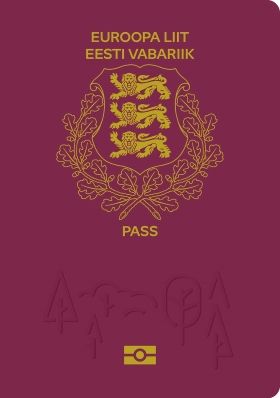
An Estonian passport is an international travel document issued to citizens of Estonia, and may also serve as proof of Estonian citizenship. Besides enabling the bearer to travel internationally and serving as indication of Estonian citizenship, the passport facilitates the process of securing assistance from Estonian consular officials abroad or other European Union member states in case an Estonian consular is absent, if needed. If an Estonian citizen wishes to receive an identity document, especially an Estonian passport, somewhere other than the foreign representation of the Republic of Estonia, then the bearer of the Estonian citizenship staying abroad could receive the travel documents in embassies of any EU country worldwide by paying 50 Euro. Many countries require passport validity of no less than 6 months and one or two blank pages.
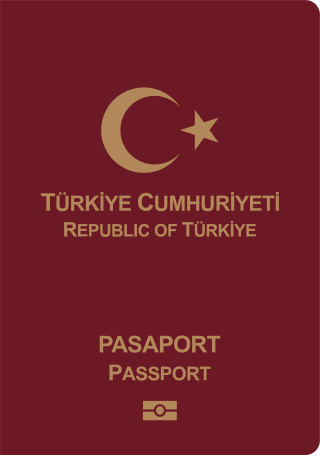
Turkish passports are issued in accordance with the Passport Act from 15 July 1950 to Turkish citizens to travel abroad. Citizens of the de facto state of the Turkish Republic of Northern Cyprus (TRNC) are also eligible to apply for a Turkish passport.

A Bulgarian passport is an international travel document issued to nationals of Bulgaria, and may also serve as proof of Bulgarian citizenship. Besides enabling the bearer to travel internationally and serving as indication of Bulgarian citizenship, the passport facilitates the process of securing assistance from Bulgarian consular officials abroad or other European Union member states in case a Bulgarian consular is absent, if needed.

Swedish passports are issued to nationals of Sweden for the purpose of international travel. Besides serving as proof of Swedish citizenship, they facilitate the process of securing assistance from Swedish consular officials abroad.

An Italian passport is issued upon request to an Italian citizen for the purpose of international travel. It is valid for 10, 5 or 3 years, depending on the applicant's age. Its biometric version has been available since 2006.
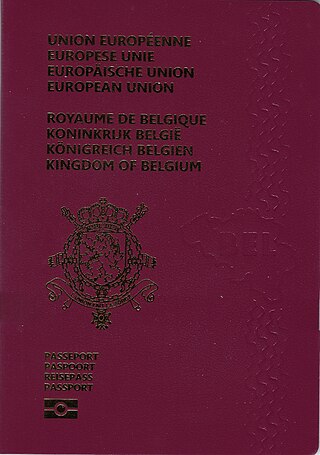
A Belgian passport is a travel document issued by Belgium to Belgian citizens to facilitate international travel. It grants the bearer international passage in accordance with visa requirements and serves as proof of citizenship.

A Danish passport is an identity document issued to citizens of the Kingdom of Denmark to facilitate international travel. Besides serving as proof of Danish citizenship, they facilitate the process of securing assistance from Danish consular officials abroad.

The European Union itself does not issue ordinary passports, but ordinary passport booklets issued by its 27 member states share a common format. This common format features a coloured cover emblazoned—in the official language(s) of the issuing country —with the title "European Union", followed by the name(s) of the member state, the heraldic "Arms" of the State concerned, the word "PASSPORT", together with the biometric passport symbol at the bottom centre of the front cover.

Latvian passports are issued to citizens of Latvia for identity and international travel purposes. Receiving a valid passport is mandatory from the age of 15, but passports can be requested for younger children if needed for travel and other purposes. A passport is valid for 10 years if the citizen is 20 or older, for 5 years if 5–20 and for 2 years if 0–5 years old. Non-citizen passports, and refugee travel documents, have been issued until 2020. Every Latvian citizen is also a citizen of the European Union. The passport, along with the national identity card, allows Latvian citizens to travel and to have rights of free movement and rights to reside in any states of the European Union, European Economic Area and Switzerland.

Slovenian passports are issued to citizens of Slovenia to facilitate international travel. Every Slovenian citizen is also a citizen of the European Union. The passport, along with the national identity card allows for free rights of movement and residence in any of the states of the European Union, European Economic Area and Switzerland, as a result of the right of free movement and residence granted in Article 21 of the EU Treaty.

The passport of Kosovo is a travel document that is issued by the Interior Ministry of Kosovo to the citizens of Kosovo to enable them to travel abroad. The passports are also used as proof of identity within the country, along with the national identity card.

A Polish passport is an international travel document issued to nationals of Poland, and may also serve as proof of Polish citizenship. Besides enabling the bearer to travel internationally and serving as indication of Polish citizenship, the passport facilitates the process of securing assistance from Polish consular officials abroad or other European Union member states in case a Polish consular is absent, if needed.
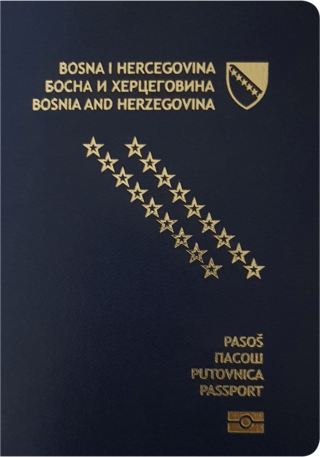
The Bosnia and Herzegovina passport is a passport issued to citizens of Bosnia and Herzegovina for international travel.
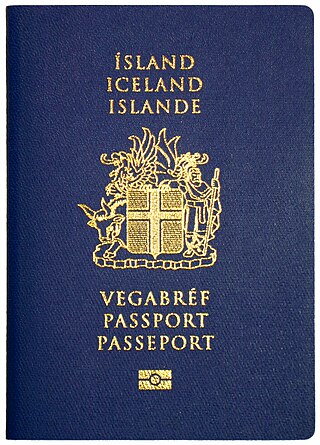
Passports of the EFTA member states are passports issued by the European Free Trade Association (EFTA) member states Iceland, Liechtenstein, Norway and Switzerland. EFTA is in this article used as a common name for these countries.

